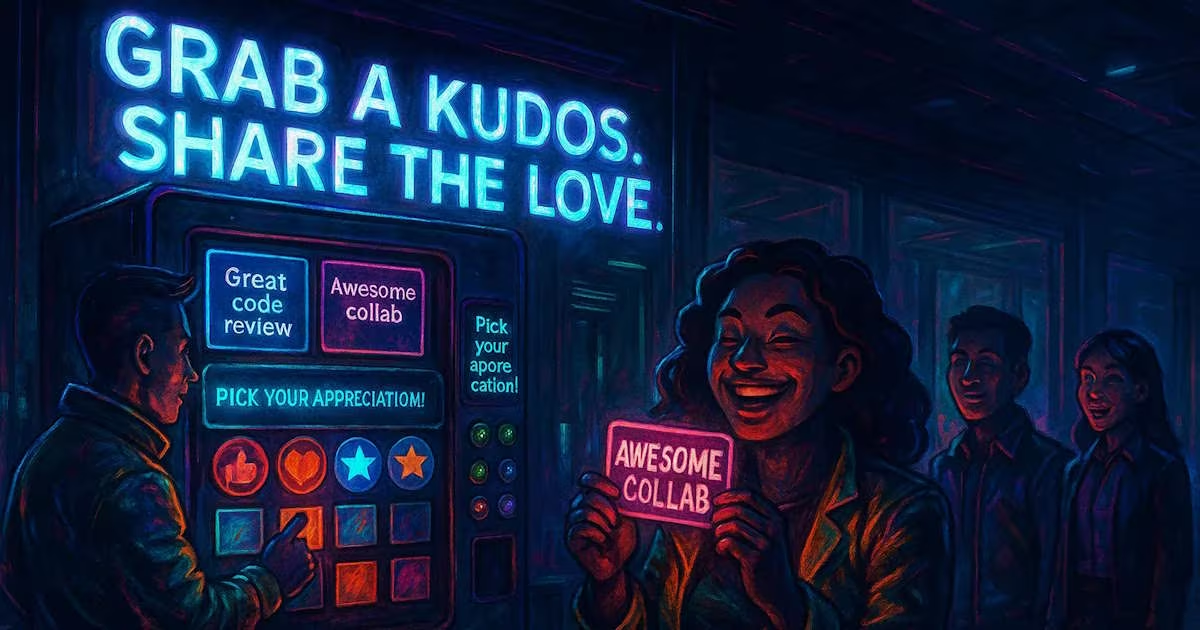
Why Recognition Needs to Be Peer-to-Peer—Not Just Top-Down
The Traditional View of Recognition Is Outdated
For a long time, recognition was something that came from the top. Your manager would give you a compliment during a performance review. An executive might call you out in a company-wide email. And if you were lucky, maybe you’d get an award once a year.
That model might have worked when teams were more hierarchical. But work today? It’s fast, cross-functional and deeply collaborative. The people who see your effort and impact the most aren’t always your managers.
They’re your teammates. And that’s why recognition needs to flow peer-to-peer, not just from the top down.
The Problem with Top-Down-Only Recognition
Top-down recognition still has value—but it’s not enough on its own. Here’s why:
- It’s limited: Managers don’t see everything. They often miss quiet wins, behind-the-scenes collaboration and small moments of impact.
- It’s slow: Recognition is often bundled into quarterly reviews or annual check-ins—long after the moment has passed.
- It creates blind spots: The same people may always get praised, while quieter contributors go unnoticed.
When recognition only comes from leadership, it can feel filtered, political, or just out of touch. And that’s a problem for morale and trust.
What Makes Peer-to-Peer Recognition So Powerful
Peer recognition flips the script—and it works. Why?
✅ It’s Timely
When someone helps unblock you in a sprint, you can thank them immediately. Recognition happens in the context of real work, not a distant HR cycle.
✅ It Feels More Authentic
Praise from the people you work alongside every day? That hits differently. It feels genuine, because it’s based on shared effort and understanding.
✅ It Builds Team Trust
Giving kudos creates a habit of looking for the good in others. That strengthens team connection, especially in fast-paced or distributed environments.
✅ It Distributes Culture
Peer recognition makes culture a shared responsibility—not just something driven by leadership. Everyone plays a part in making the team better.
If you want a simple structure for giving thoughtful appreciation, you can explore how kudo cards support peer-to-peer recognition.
The Research Backs It Up
The science agrees:
- A SHRM study found that organizations with peer recognition programs see higher engagement, stronger cultures and better retention.
- Harvard Business Review reports that recognition from coworkers is often more meaningful than from managers—because peers see the details that matter.
And let’s not forget the neurological side: timely recognition triggers dopamine, boosting motivation and reinforcing positive behaviors.
Real-World Moments That Matter
You’ve seen this before:
- A dev thanks a colleague in stand-up for jumping in during a late-night deploy.
- A marketer gives kudos to a designer for quickly turning around a last-minute request.
- A teammate recognizes another for showing empathy in a tough client meeting.
These moments may seem small—but they build something big: trust, belonging and momentum.
How to Make Peer Recognition a Habit
The good news? You don’t need a huge initiative to make this happen.
Try these:
Add a kudos moment to your stand-up or retro
Ask, "Anyone want to give a shoutout from this sprint?"Create a space for appreciation
Use a #kudos channel in Slack or Teams so recognition is visible and public.
If your team enjoys using themed or visual cards for appreciation, you can browse our kudo card templates to find designs that fit different types of contributions.
Use a lightweight tool like esteam.life
Make giving kudos easy, spontaneous and trackable—without adding admin overhead. If your team prefers recognition that feels personal, simple and specific, you can look at what kudo cards are.Encourage recognition of effort—not just outcomes
Help your team value collaboration, support and growth alongside deliverables.
Recognition Belongs to Everyone
Yes, recognition from leadership is meaningful. But the most consistent, motivating and culture-building recognition happens peer-to-peer—between the people doing the work, side by side.
Want to create a team that notices, supports and uplifts each other?
"Let them give each other the credit they deserve."
Because in great teams, everyone’s part of the recognition loop.